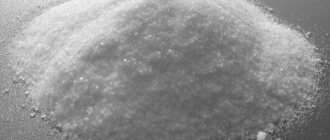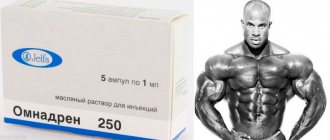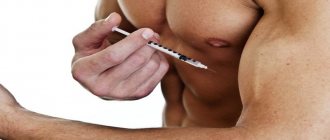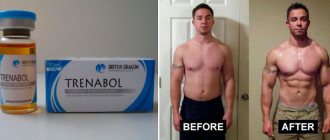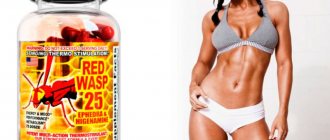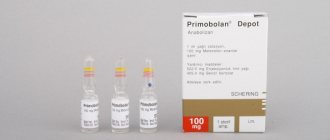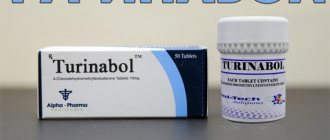Instructions for use CREATINFOSFAT
The drug is administered only intravenously (iv, stream or drip) in accordance with the doctor's prescription for 30-45 minutes, 1 g 1-2 times a day.
Creatine phosphate is administered as soon as possible from the moment signs of ischemia appear, which improves the prognosis of the disease.
The contents of the bottle are dissolved in 10 ml of water for injection, 10 ml of 0.9% sodium chloride solution for infusion or 5% glucose solution for infusion. Shake the bottle vigorously until completely dissolved. As a rule, complete dissolution of the drug takes at least 3 minutes.
Creatine phosphate is used in cardioplegic solutions at a concentration of 10 mmol/l (~2.1 g/l) to protect the myocardium during cardiac surgery. Add to the solution immediately before administration.
Acute myocardial infarction
1 day:
- 2-4 g of the drug, diluted in 50 ml of water for injection, as a rapid intravenous infusion, followed by an intravenous infusion of 8-16 g in 200 ml of a 5% dextrose (glucose) solution over 2 hours.
2 days:
- 2-4 g in 50 ml of water for injection intravenously (infusion duration is at least 30 minutes) 2 times a day.
3 days:
- 2 g in 50 ml of water for injection intravenously (infusion duration is at least 30 minutes) 2 times a day. If necessary, a course of infusions of 2 g of the drug 2 times a day can be carried out for 6 days. The best treatment results were recorded in patients in whom the first administration of the drug was carried out no later than 6–8 hours from the onset of clinical manifestations of the disease.
Chronic heart failure
Depending on the patient’s condition, you can begin treatment with “shock” doses of 5-10 g of the drug in 200 ml of a 5% dextrose (glucose) solution intravenously at a rate of 4-5 g/hour for 3-5 days, and then switch for IV drip administration (infusion duration of at least 30 minutes) 1-2 g of the drug diluted in 50 ml of water for injection, 2 times a day for 2-6 weeks or immediately begin IV drip administration of maintenance doses of the drug Creatine phosphate (1-2 g in 50 ml of water for injection 2 times a day for 2-6 weeks).
Intraoperative myocardial ischemia
A course of intravenous drip infusions lasting at least 30 minutes of 2 g of the drug in 50 ml of water for injection 2 times a day is recommended for 3-5 days before surgery and for 1-2 days after it. During surgery, Creatine phosphate is added to the regular cardioplegic solution at a concentration of 10 mmol/l or 2.5 g/l immediately before administration.
Intraoperative ischemia of the lower extremities
2-4 g of the drug Creatine phosphate in 50 ml of water for injection as a rapid intravenous infusion before surgery, followed by an intravenous drip of 8-10 g of the drug in 200 ml of a 5% dextrose (glucose) solution at a rate of 4-5 g /h during surgery and during reperfusion.
Metabolic disorders of the myocardium under conditions of hypoxia
The drug is administered intravenously at 1-2 g/day as a bolus injection or infusion.
Sports medicine
To prevent the development of acute and chronic physical overexertion syndrome and improve the adaptation of athletes to extreme physical activity, Creatine phosphate should be used at a dose of 1 g/day in 50 ml of water for injection intravenously (infusion duration is at least 30 minutes) for 3-4 weeks .
Creatine phosphate, lyophilisate for solution for infusion 1.0 g
Pharmacodynamics
Creatine phosphate (phosphocreatine) plays a key role in providing energy to the muscle contraction mechanism. In the myocardium and skeletal muscles, creatine phosphate is a reserve form of biochemical energy, which is used for resynthesis of ATP and, through hydrolysis, provides energy for the process of muscle contraction. During ischemia of muscle tissue, the content of creatine phosphate in myocytes quickly decreases, which is one of the leading causes of impaired contractility. Creatine phosphate improves the metabolism of the myocardium and muscle tissue, slows down the decrease in contractility of the heart muscle during ischemia, and has a cardioprotective effect on ischemic myocardium.
Experimental cardiopharmacological studies have confirmed the metabolic role of creatine phosphate and its protective properties towards the myocardium:
a) Intramuscular administration of creatine phosphate has a dose-dependent protective effect in various cardiomyopathies induced by: isoprenaline in rats and pigeons, thyroxine in rats, emetine in guinea pigs, p-nitrophenol in rats;
b) Creatine phosphate has a positive inotropic effect on the isolated heart of a frog, guinea pig, rat, as well as under conditions of glucose deficiency, Ca2+ or K+ overdose;
c) Creatine phosphate counteracts the negative inotropic effect induced by anoxia in isolated guinea pig atrium;
d) The addition of creatine phosphate to cardioplegic solutions enhances myocardial protection in various experimental models, both in an isolated organ and in vivo;
— on the rat heart during cardiopulmonary bypass and ischemic cardiac arrest, perfusion with cardioplegic solutions with the addition of creatine phosphate in both normal and hypothermia states protects the heart from ischemic damage; this protective effect with the addition of potassium, magnesium and procaine is optimal at a creatine phosphate concentration of 10 mmol/l;
— on a working isolated rat heart, under conditions of regional ischemia (ligation of the left anterior descending coronary artery for 15 minutes), pre-ischemic infusion of creatine phosphate (10 mmol/l) has a protective effect against the development of reperfusion arrhythmia;
— on an isolated dog heart and in vivo (on a normal and hypertrophic heart) after cardiac arrest using hyperpotassium solutions, perfusion of cardioplegic solutions with creatine phosphate plays a protective role; at the same time, a decrease in the degradation of ATP and creatine phosphate, preservation of the structure of mitochondria and sarcolemma, and improvement of functional recovery after reperfusion arrhythmia are recorded;
— on the pig heart in vivo under conditions of circulatory bypass, the addition of creatine phosphate to cardioplegic solutions provides the best myocardial protection;
e) Creatine phosphate plays a protective role in experimental myocardial infarction and coronary occlusion:
— in dogs during experimental myocardial infarction obtained by ligation of the circumflex artery, the administration of creatine phosphate (200 mg/kg bolus followed by an infusion of 5 mg/kg/min) stabilizes hemodynamic parameters, has antiarrhythmic and antifibrillatory effects, and prevents a decrease in the contractile function of the heart during ischemia , thereby limiting the expansion of the infarction zone;
— in rats under conditions of coronary ligation, creatine phosphate reduces the frequency and duration of ventricular fibrillation;
— intravenous infusion of creatine phosphate reduces the area of infarction in rabbits and cats after ligation of the coronary artery;
f) The cardioprotective effect of creatine phosphate is associated with stabilization of the sarcolemma, preservation of the cellular pool of adenine nucleotides to inhibit enzymes of nucleotide catabolism, preventing the degradation of phospholipids in the ischemic myocardium, can improve microcirculation in ischemic areas and inhibit ADP-induced platelet aggregation.
Pharmacokinetics
In rabbits, after a single intramuscular injection of creatine phosphate, the maximum content of creatine phosphate in the bloodstream, amounting to 25-28% of the administered dose, is observed 20-40 minutes after administration. The concentration of creatine phosphate decreases slowly and 250 minutes after administration, the bloodstream contains 9% of exogenous creatine phosphate. After a single intramuscular injection of creatine phosphate, an increase in ATP levels is also observed. The effect is detected 40 minutes after administration and lasts up to 250 minutes. In this case, the maximum increase in ATP concentration by 25% occurs 100 minutes after the administration of creatine phosphate. After intravenous administration in rabbits, creatine phosphate remains in the bloodstream with a gradual decrease in content over 30 minutes. In this case, there is also an increase in the ATP concentration in the blood by 24% with a return to normal levels after 300 minutes.
In humans, under conditions of single intravenous administration, the half-life of creatine phosphate begins from 5 to 12 minutes. After administration of creatine phosphate in a dose of 5 g by slow infusion, the content of creatine phosphate in the blood is about 5 nmol/ml after 40 minutes, and 40 minutes after the administration of creatine phosphate in a dose of 10 g, the content of creatine phosphate in the blood is about 10 nmol/ml. After intramuscular administration, creatine phosphate appears in the bloodstream within 5 minutes, reaching after 30 minutes maximum concentrations of about 10 nmol/ml for a dose of 500 mg and about 11-12 nmol/ml for a dose of 750 mg. 60 minutes after administration, the concentration of creatine phosphate in the blood decreases to 4-5 nmol/ml. 120 minutes after administration, the residual content of exogenous creatine phosphate is 1-2 nmol/ml.
Energy for muscle contractions!
The movement of any joint is carried out due to contractions of skeletal muscles. The following diagram shows energy metabolism in muscle.
ATP
The contractile function of all types of muscles is due to the conversion of chemical energy of certain biochemical processes into mechanical work in muscle fibers. Hydrolysis of adenosine triphosphate (ATP) provides the muscle with this energy.
Since the supply of ATP
ATP
resynthesis so that the level of synthesis corresponds to the costs of muscle contraction.
The generation of energy to ensure muscle work can be carried out anaerobically (without the use of oxygen) and aerobically. ATP
is synthesized from adenosine diphosphate (
ADP
) via creatine phosphate energy, anaerobic glycolysis, or oxidative metabolism.
ATP
reserves in muscles are relatively insignificant and can only last for 2-3 seconds of intense work.
Creatine phosphate
Creatine phosphate reserves ( CrF
) there are more
ATP
and they can be quickly converted anaerobically into
ATP
.
KrF
is the “fastest” energy in the muscles (it provides energy in the first 5-10 seconds of very powerful, explosive strength work, for example, when lifting a barbell).
After depleting KrF
, the body proceeds to the breakdown of muscle glycogen, which provides longer (up to 2-3 minutes) but less intense (three times) work.
Glycolysis
Glycolysis is a form of anaerobic metabolism that provides resynthesis of ATP
and
KrF
due to reactions of anaerobic breakdown of glycogen or glucose to lactic acid.
KrF
It is considered a fast-implementation fuel that regenerates
ATP
, of which there is a small amount in the muscles and therefore
KrF
is the main energy source within a few seconds.
Glycolysis is a more complex system that can function for a long time, so its importance is essential for longer-term active actions. The KrF
is limited by its small number. Glycolysis, on the other hand, has the ability to provide relatively long-term energy supply, but by producing lactic acid, it fills the motor cells with it and, because of this, limits muscle activity.
Oxidative metabolism
Associated with the ability to perform work due to the oxidation of energy substrates, which can be carbohydrates, fats, and proteins, while simultaneously increasing the delivery and utilization of oxygen in working muscles.
To replenish immediate and short-term energy reserves and perform long-term work, the muscle cell uses so-called long-term energy sources. These include glucose and other monosaccharides, amino acids, fatty acids, and glycerol components of food products delivered to the muscle cell through the capillary network and involved in oxidative metabolism. These energy sources generate the formation of ATP
by combining the utilization of oxygen with the oxidation of hydrogen carriers in the electron transport system of the mitochondria.
In the process of complete oxidation of one glucose molecule, 38 ATP
. When comparing anaerobic glycolysis with aerobic breakdown of carbohydrates, you can see that the aerobic process is 19 times more efficient.
During short-term intense physical activity, KrF
, glycogen and glucose in skeletal muscles.
Under these conditions, the main factor limiting the formation of ATP
can be considered the lack of the required amount of oxygen. Intense glycolysis leads to the accumulation of large amounts of lactic acid in skeletal muscles, which gradually diffuses into the blood and is transferred to the liver. High concentrations of lactic acid become an important factor in the regulatory mechanism that inhibits the metabolism of free fatty acids during physical activity lasting 30-40 s.
As the duration of physical activity increases, the concentration of insulin in the blood gradually decreases. This hormone is actively involved in the regulation of fat metabolism and, at high concentrations, inhibits the activity of lipases. A decrease in insulin concentration during prolonged physical activity leads to an increase in the activity of insulin-dependent enzyme systems, which manifests itself in an increase in the process of lipolysis and an increase in the release of fatty acids from the depot.
The importance of this regulatory mechanism becomes apparent when athletes make the most common mistake. Often, trying to provide the body with easily digestible sources of energy, an hour before the start of competitions or training, they take a carbohydrate-rich food or a concentrated drink containing glucose. This saturation of the body with easily digestible carbohydrates leads after 15-20 minutes to an increase in the level of glucose in the blood, and this, in turn, causes an increased release of insulin by pancreatic cells. An increase in the concentration of this hormone in the blood leads to increased consumption of glucose as an energy source for muscle activity. Ultimately, instead of energetically more beneficial fatty acids, the body uses carbohydrates. Thus, taking glucose an hour before the start can significantly affect athletic performance and reduce endurance to long-term exercise.
The active participation of free fatty acids in the energy supply of muscle activity allows you to more economically perform long-term physical activity. Increased lipolysis during exercise releases fatty acids from fat stores into the blood, and they can be delivered to skeletal muscles or used to form blood lipoproteins. In skeletal muscles, free fatty acids penetrate into mitochondria, where they undergo sequential oxidation associated with phosphorylation and ATP
.
Each of the listed bioenergetic components of physical performance is characterized by the criteria of power, capacity and efficiency (Table 1).
Table 1. Basic bioenergetic characteristics of metabolic processes - sources of energy during muscle activity
| Power criteria | Maximum energy capacity, kJ/kg | |||
| Metabolic process | Maximum power, kJ/kGmin | Time to reach max. power. physical work, with | Uptime at max. power, s | |
| Alactate anaerobic | 3770 | 2-3 | 6-9 | 630 |
| Glycolytic - anaerobic | 2500 | 15-20 | 90-250 | 1050 |
| Aerobic | 1250 | 90-180 | 340-600 | Not limited |
The power criterion evaluates the maximum amount of energy per unit of time that can be provided by each of the metabolic systems.
The capacity criterion evaluates the total reserves of energy substances in the body available for use, or the total amount of work performed due to a given component.
The efficiency criterion shows how much external (mechanical) work can be performed for each unit of energy expended.
The ratio of aerobic and anaerobic energy production when performing work of varying intensity is important. Using the example of running distances from athletics, we can imagine this ratio (Table 2)
Table 2. Relative contribution of the mechanisms of aerobic and anaerobic energy production when performing single work of various durations with maximum intensity
| Energy supply zones | Duration of work | Share of energy products (V %) | ||
| time, min | Distance, m | Aerobic | Anaerobic | |
| Anaerobic | 10-13″ | 100 | 4 | 96 |
| 20-25″ | 200 | 9 | 91 | |
| 45-60″ | 400 | 19 | 81 | |
| 1,5-2,0′ | 800 | 35 | 65 | |
| Mixed aerobic-anaerobic | 2,5-3′ | 1000 | 44 | 56 |
| 4,0-6,0′ | 1500 | 70 | 30 | |
| 8,0-13,0′ | 3000-5000 | 85 | 15 | |
| Aerobic | 12,0-20,0′ | 5000 | 90 | 10 |
| 24,0-45,0′ | 10000 | 94 | 6 | |
| More than 1.5 hour | 30000-42195 | 98 | 2 | |
Creatine phosphate is a source of explosive energy
Creatine is a substance of skeletal muscles, myocardium, and nervous tissue. In the form of creatine phosphate , creatine is a “depot” of high-energy bonds and is used for rapid resynthesis of ATP during cell function.
Use of creatine phosphate for ATP resynthesis
The role of creatine in muscle tissue is especially significant. Creatine phosphate ensures urgent resynthesis of ATP in the first seconds of work (5-10 sec), when no other energy sources (anaerobic glycolysis, aerobic oxidation of glucose, β-oxidation of fatty acids) are yet activated and the blood supply to the muscle is not increased. In nervous tissue cells, creatine phosphate maintains cell viability in the absence of oxygen.
During muscular work, Ca2+ ions released from the sarcoplasmic reticulum are activators of creatine kinase. The reaction is also interesting because in its example one can observe an inverse positive relationship - activation of the enzyme by the reaction product creatine . This avoids a decrease in the reaction rate during work, which would occur according to the law of mass action due to a decrease in the concentration of creatine phosphate in the working muscles.
About 3% of creatine phosphate is constantly converted to creatinine non-enzymatic . The amount of creatinine secreted healthy person per day is always almost the same and depends only on the volume of muscle mass. The level of creatine kinase activity in the blood and the concentration of creatinine in the blood and urine are valuable diagnostic indicators.
Formation of creatinine from creatine phosphate
Creatine synthesis
Creatine synthesis occurs sequentially in the kidneys and liver in two transferase reactions. After synthesis is completed, creatine is delivered through the bloodstream to the muscles or brain.
Reactions of creatine synthesis in the kidneys and liver
Here, in the presence of ATP energy (during rest or rest), it is phosphorylated to form creatine phosphate.
Creatine phosphate synthesis
If the synthesis of creatine outpaces the possibility of its fixation in muscle tissue, then creatinuria - the appearance of creatine in the urine. Physiological creatinuria is observed in the first years of a child’s life. Sometimes creatinuria in old people is classified as physiological, which occurs as a result of muscle atrophy and incomplete use of creatine formed in the liver. In diseases of the muscular system (myopathy or progressive muscular dystrophy), the highest concentrations of creatine are observed in the urine - pathological creatinuria.
0
Frequently asked questions about creatine!
Learn about creatine, how it works, where it comes from, how it is used and much more!
What is creatine?
Creatine is a nutrient found naturally in our bodies. This is a combination of 3 amino acids - arginine, glycine and methionine. Creatine helps provide muscles with the energy they need to move, especially fast, intense movements. Muscle contraction mainly occurs due to the energy of ATP (adenosine triphosphate).
There is enough ATP to supply muscles with energy for just 10 seconds. In order for this system to continue working, more ATP is needed. Creatine phosphate donates its phosphate groups to the ADP (adenosine diphosphate) molecule, thus restoring ATP. The increased supply of creatine phosphate to muscles helps increase the rate at which the body can synthesize ATP molecules.
Breakdown of creatine.
This process improves the muscles' ability to perform work and makes energy consumption more efficient. Research shows that creatine helps increase workout intensity and subsequent recovery. It is able to pass through the wall of the gastrointestinal tract (stomach) and enter the bloodstream unchanged, and then, when entering muscle fibers, it is converted into creatine phosphate (CP).
What is creatine phosphate?
Creatine phosphate is an organic substance present in muscle fibers, which is broken down into fractions by enzymes for the subsequent synthesis of ATP.
What is adenosine triphosphate (ATP)?
ATP is an organic substance found in muscles that, when broken down enzymatically, provides energy for muscle contraction. Creatine increases your body's ability to synthesize protein in muscle fibers, which helps increase muscle mass. (Creatine enhances cellular hydration. Containing sufficient water, muscle cells become more permeable, allowing more amino acids to penetrate into them.) Increased production of contractile proteins (actin and myosin) enhances the muscle's ability to perform physical activity. To summarize, creatine helps you perform more reps at your chosen weight.
This will increase the time of muscle tension, and thus the number of muscle fibers recruited will increase, which in turn will increase the number of muscle cells stimulated. Additionally, this process will cause your body to stop using another energy-producing system called glycolysis, which produces lactic acid as a byproduct. Lactic acid causes the burning sensation felt during exercise.
Does this mean I can lift more weight or run faster?
Indirectly, YES! Directly - POSSIBLE! Creatine doesn't make YOU stronger or faster, YOU make YOURSELF stronger or faster. Creatine allows you to train more intensely and recover faster.
If you recover better, you'll be in a fresher, more rested state before you start your next set, and as a result, you'll get more benefit from those workouts than you otherwise would have. Let's look at the bench press as an example: before taking creatine, our athlete, let's call him “Maximus,” did 4 sets of bench presses.
His goal was to train with a weight of 100 kg for 4 sets of 8 reps each, but he usually did sets of 8, 8, 6 and 4 reps, respectively. By the 3rd and 4th sets, his muscles were already fatigued, and as a result he was unable to achieve his goal. If Maximus starts taking creatine, he will likely notice an improvement in recovery significant enough to complete his goal of doing 4 sets of 8 reps each.
Further, if Maximus continues to take creatine, eat right, and train hard at an intense level for 12-16 weeks, he will be able to increase the weight used on the bench press to 110 kg for 4 sets of 8 reps each. At the end of the day, remember – you must exercise accordingly! Use creatine to progress rather than stagnate.
What are the natural sources of creatine?
You're probably asking, "Why do I need creatine when it's already naturally present in my body?" Well, the reason is that most people only get 1g of creatine per day from food.
This, along with another gram synthesized endogenously, adds up to a relatively paltry 2g of creatine per day. If you eat a lot of red meat, you shouldn't expect exceptional results from taking a creatine supplement (400 g of beef contains approximately 2 g of creatine, and the same amount of herring - 4.6 g. More than 2 g of creatine is contained in 400 g of most types fish).
Vegetarians will notice the maximum results in this case. Vegetarians synthesize this substance in the same way as their “carnivorous” counterparts; They rarely replenish their muscle creatine stores to capacity because they avoid eating nutrient-dense foods like beef.
This is why they respond very well to creatine. Creatine supplements are suitable even for vegans because the product is synthetic and not made from animal materials.
Can creatine have toxic effects if used for a long time?
To tell the truth, no one knows. Although our bodies only produce 1-2 grams per day, chances are your body can handle 5 grams or more per day. Anyone weighing more than 90 kg can take 10 g without fear for their health, provided that they drink enough fluids (to avoid cramps). Some athletes have been taking up to 20-30 grams of creatine per day since it became widely available in 1990.
Is creatine safe?
Yes, creatine is a naturally occurring amino acid found in the human and animal body. The human body contains 100-115 g of creatine in the form of creatine phosphate. Studies have shown no side effects from taking creatine when taking recommended doses.
Are there any side effects of taking creatine?
Creatine is so effective in delivering water to the intramuscular space that it can cause side effects associated with muscle spasms. This usually occurs when too little water is consumed while taking creatine.
Muscle cramps, tension and tears are all anecdotal stories that are not supported by scientific facts. Creatine removes water from your internal organs, so if you take large amounts without water, mild stomach cramps may occur.
How to avoid this? Simply drink 0.5 liters of water with each dose. Water is very important to an athlete's health, and most of us don't drink enough water. Ideally, we should drink 2-2.5 liters of water per day. This will only bring benefits, and will also allow you to get better results from taking creatine monohydrate. Additional water helps maximize the effects of this substance.
When is the best time to take creatine?
For best results on training days, take creatine after exercise. This will not cause nausea and, in addition, will best replenish spent reserves. If you want to take more on a training day (i.e., 10g), take half the dose before training and the other half after.
How much creatine should I take?
The following doses are recommended:
- ? 63 kg = 5-6 g per day to maintain shape
- 63–75 kg = 6–7.5 g per day to maintain shape
- 75–90 kg = 8 g per day to maintain shape
- 90–109 kg = 8–10 g per day to maintain shape
- > 109 kg = 10–12 g per day
Ways to take creatine
You can find many different recommendations on how to take creatine. Studies have shown that your cells are 60% better at absorbing creatine when you combine it with a monosaccharide base such as grape juice (rich in natural glucose).
A rise in insulin levels will facilitate the penetration of creatine into cells. Never take creatine with orange juice! It easily negates all the positive effects due to increased acidity.
This topic is currently a matter of debate, but perhaps the best way is to take creatine monohydrate with warm water; you can add simple carbohydrates if necessary. If you are prone to stomach upset, cranberry juice is recommended to ease the discomfort.
- Creatine compounds. The theory tells us that in order to get the maximum benefit from taking creatine, you need to take it with simple carbohydrates. The idea is that this will cause a rise in insulin levels, which will cause creatine monohydrate to quickly move into your muscles. The main ingredients of all transport compounds are creatine and dextrose. If we take an imaginary container with 1000 g of such a substance, then it will contain 200 g of creatine and 800 g of dextrose. Some will be represented by other substances such as glutamine, etc., but frankly speaking, they are not enough to significantly change the picture.
- Why use "transport" connections? In today's fast moving world, this is just for your convenience. The price of such drugs is higher, but any convenience, be it food or drink, always costs more!
- How much do they cost? Containers weighing 1 kg are sold in stores for prices ranging from $28 to $40. 40 dollars is just a joke. At most, 1 kg will last you a month.
Tip: You can buy these drugs if you want, but only use them on training days. On days when you are not training, take only regular creatine monohydrate (MC). If the idea is to deliver MK to the muscles, then probably the best time to take it is either before or during a workout.
Should I go through a high-volume creatine phase first?
No, this is not necessary. Taking just 3 grams of creatine per day for 28 days gives the same effect of saturating muscles with creatine as 6 days of supplementation. So, if you decide to take creatine, it will take you about a month to reach normal levels of creatine in your muscles.
Taking large doses of creatine, such as during the boost phase, does not inhibit the body's synthesis of this substance after you stop using it.
If I stop taking creatine, will I lose weight or muscle mass?
There is no reason to expect muscle loss. However, you will still lose a few pounds because creatine hydrates your cells, unlike sodium-induced bloating.
Does creatine cause water retention in your body?
No. Creatine absorbs water from the body to do its job. There is a difference between increasing cell volume due to water saturation and water retention. Increasing the volume of cells causes more water to be contained within them, making the muscle larger and harder. Water retention, the process that makes muscles appear smooth, occurs outside the muscle fibers.
How does creatine help muscles grow?
To achieve increased natural muscle strength, increased tissue growth, or improved athletic performance, strength training is necessary. Muscle growth occurs when they perform increased workload. Without weight training, your muscles will remain small in volume.
Creatine promotes strength training by restoring the energy-carrying molecule ATP. Creatine also inhibits the formation of lactic acid, allowing you to train longer. As you know, lactic acid is one of the main causes of exercise-related muscle fatigue.
Creatine on HotEnot.ru
Optimum Nutrition Micronized Creatine Powder
Pure creatine monohydrate. Increases strength and accelerates muscle growth!
Optimum Nutrition Creatine 2500 Caps
Pure creatine monohydrate! Increasing endurance and training efficiency!
Hardlabz Creatine
A Blend of Five Types of Creatine! Stimulates muscle growth to create a strong, defined physique!
YOU MAY ALSO BE INTERESTED IN:
- COENZYME Q10
- TESTOSTERONE BOOSTER
- PROTEIN FROM A TO Z
